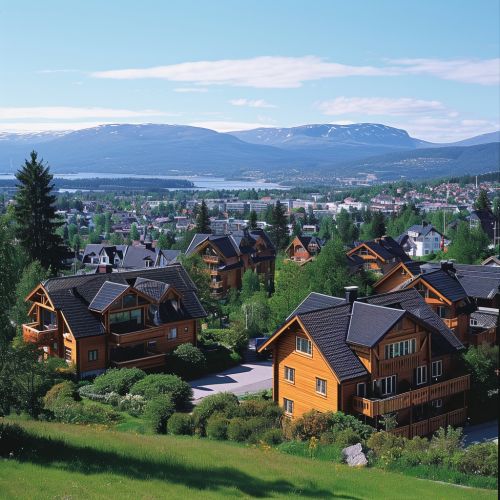Lillehammer
History
Lillehammer is a city in Norway known for its rich history dating back to the Iron Age. The area was originally part of the traditional region of Gudbrandsdal. The city itself was founded in 1827, and its development was largely influenced by the establishment of a railway connection in 1894. The railway brought economic growth and made Lillehammer an important hub for trade and industry.

Geography
Situated on the northern shore of Lake Mjøsa, Norway's largest lake, Lillehammer is surrounded by a landscape of forests, hills, and mountains. The city is located in the southern part of the country, in the region of Innlandet. The geographical location and natural environment of Lillehammer have played a significant role in shaping its history and culture.
Economy
Lillehammer's economy is diverse, with a mix of traditional industries and modern sectors. The city is known for its production of agricultural goods, particularly dairy products. In recent years, the service sector has grown significantly, with a focus on tourism, education, and healthcare. Lillehammer is also home to several institutions of higher education, including the Inland Norway University of Applied Sciences, which contributes to the city's vibrant academic and cultural life.
Culture
Lillehammer is renowned for its cultural scene, which includes a number of museums, art galleries, and music venues. The city is home to the Lillehammer Art Museum and the Norwegian Olympic Museum, the latter of which celebrates Norway's rich history in winter sports. Lillehammer also hosts a variety of cultural events and festivals throughout the year, such as the annual Lillehammer Literature Festival.
Sport
Lillehammer has a strong sporting tradition, particularly in winter sports. The city hosted the 1994 Winter Olympics, an event that significantly enhanced its reputation as a winter sports destination. Lillehammer has several sports facilities, including the Lysgårdsbakkene Ski Jumping Arena and the Håkons Hall, which are used for both local and international sporting events.
Education
Education is a key sector in Lillehammer, with the city being home to several educational institutions. The most notable of these is the Inland Norway University of Applied Sciences, which offers a wide range of courses in fields such as health sciences, social sciences, and business studies. There are also several primary and secondary schools in the city, providing education for all age groups.
Transport
Lillehammer is well connected by various modes of transport. The city's railway station, Lillehammer Station, is a major hub on the Dovre Line, providing connections to other cities in Norway. Lillehammer is also served by a network of roads, including the E6 motorway, and has a local bus service that operates within the city and its surrounding areas.
